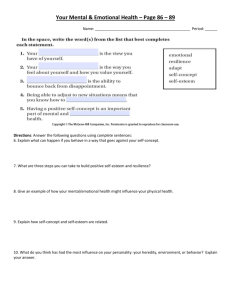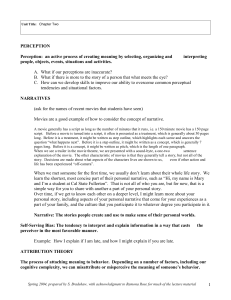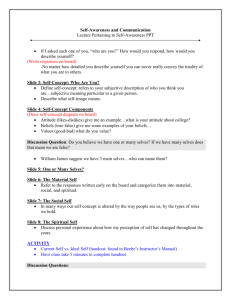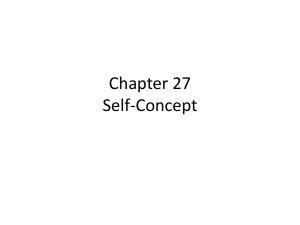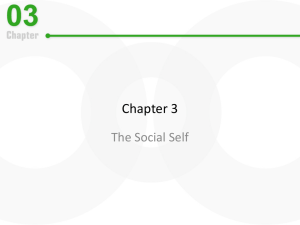File - Interpersonal Communication Comm 321
advertisement
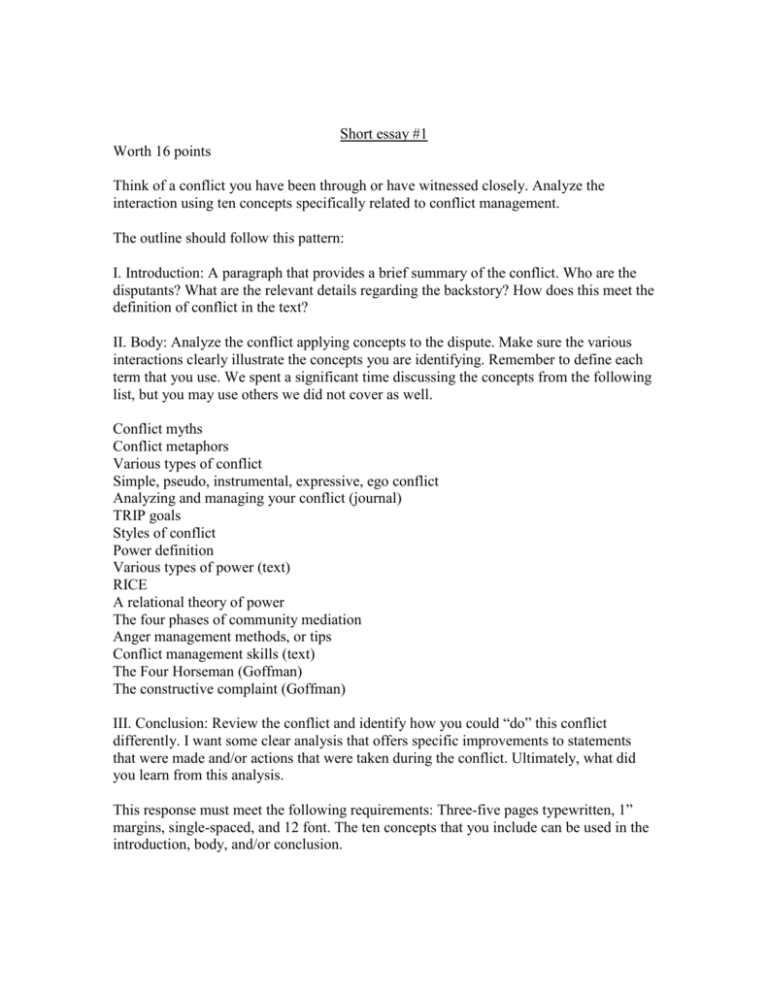
Short essay #1 Worth 16 points Think of a conflict you have been through or have witnessed closely. Analyze the interaction using ten concepts specifically related to conflict management. The outline should follow this pattern: I. Introduction: A paragraph that provides a brief summary of the conflict. Who are the disputants? What are the relevant details regarding the backstory? How does this meet the definition of conflict in the text? II. Body: Analyze the conflict applying concepts to the dispute. Make sure the various interactions clearly illustrate the concepts you are identifying. Remember to define each term that you use. We spent a significant time discussing the concepts from the following list, but you may use others we did not cover as well. Conflict myths Conflict metaphors Various types of conflict Simple, pseudo, instrumental, expressive, ego conflict Analyzing and managing your conflict (journal) TRIP goals Styles of conflict Power definition Various types of power (text) RICE A relational theory of power The four phases of community mediation Anger management methods, or tips Conflict management skills (text) The Four Horseman (Goffman) The constructive complaint (Goffman) III. Conclusion: Review the conflict and identify how you could “do” this conflict differently. I want some clear analysis that offers specific improvements to statements that were made and/or actions that were taken during the conflict. Ultimately, what did you learn from this analysis. This response must meet the following requirements: Three-five pages typewritten, 1” margins, single-spaced, and 12 font. The ten concepts that you include can be used in the introduction, body, and/or conclusion. 2. Short Essay #2 Worth 14 points (Total points for parts 1 and 2) Part 1: How do you describe your self-concept? Part 2: What is your assessment of your self-esteem? These are closely related terms, however. understanding that self-concept is the description of who you are while self-esteem is the evaluation of who you are (selfworth). The response to Part One should follow this pattern of organization: Part One Self-concept I. Introduction What is your self-concept at the present time? II. Body What were the causal factors in the development of your self-concept? Identify at least five to ten concepts. Remember to define each term that you use. We spent a significant time discussing the terms from the following list, but you may use others we did not cover as well. Dr, Baxter’s Inevitable Contradictions Dr. Dweck’s Fixed and Growth MIndset Communication Competence Content and Relational dimensions of I.C. Theories of Mediated I.C. Hyper-personal Relationships Online Communication Competence Dr. Goleman’s Emotional Intelligence Our Many Selves (Dr. William James) How self-concept develops Looking Glass Self (Dr. Cooley) Facework (Preventative and Corrective) Improving self-esteem Self disclosure The Perception Process Definition of culture Co-cultures Cultural patterns/taxonomies (Hall, Hofstede) Three levels of culture Definition of intercultural communication Definitions of: Race Ethnicity Ethnocentrism Prejudice Stereotyping Discrimination Racism Adapting to others Culture shock The U and W curves Intercultural Communication competence Improving Intercultural Communication competence Cultural relativism and universalism Acculturation (assimilation, separation, integration, and marginalization) Listening styles Listening barriers A root cause of anger The zone of effectiveness Empathic listening Enhancing Empathic Responding Skills Theories of Interpretation (Impression Formation, Implicit Personality, Attribution, Causal Attribution, Standpoint) Halo and Horn effect Barriers to accurate perception Perception checking The impact of culture/co-cultures on the Perception Process Social Decentering/ Other orientation Conclusion: What were the most significant insights that you identified in this analysis? The response to part one must meet the following requirements: Two-three pages typewritten, 1” margins, single-spaced, and 12 font. The five to ten concepts that you include can be used in the introduction, body, and/or conclusion. The response to Part Two should follow this pattern of organization: Part Two: Self-Esteem I. Introduction What is your assessment of your self-esteem at the present time? II. Body What were the causal factors in the development of your self-esteem? Identify at least five to ten concepts. Remember to define each term that you use. We spent a significant time discussing the terms from the following list, but you may use others we did not cover as well. Dr, Baxter’s Inevitable Contradictions Communication Competence Content and Relational dimensions Theories of Mediated Interpersonal Communication Hyper-personal Relationships Online Communication Competence Dr. Goleman’s Emotional Intelligence Our Many Selves (Dr. William James) How self-concept develops Looking Glass Self (Dr. Cooley) Facework (Preventative and Corrective) Improving self-esteem Self disclosure The Perception Process Definition of culture Co-cultures Cultural patterns/taxonomies (Hall, Hofstede) Three levels of culture Definition of intercultural communication Definitions of: Race Ethnicity Ethnocentrism Prejudice Stereotyping Discrimination Racism Adapting to others Culture shock The U and W curves Intercultural Communication competence Improving Intercultural Communication competence Cultural relativism and universalism Acculturation (assimilation, separation, integration, and marginalization) Listening styles Listening barriers A root cause of anger The zone of effectiveness Empathic listening Enhancing Empathic Responding Skills Theories of Interpretation (Impression Formation, Implicit Personality, Attribution, Causal Attribution, Standpoint) Halo and Horn effect Barriers to accurate perception Perception checking The impact of culture/co-cultures on the Perception Process Social Decentering/ Other orientation Conclusion: What were the most significant insights that you identified in this analysis? How can you improve your self-esteem? Explain. The response to Part Two must meet the following requirements: Two-three pages typewritten, 1” margins, single-spaced, and 12 font. The five to ten concepts that you include can be used in the introduction, body, and/or conclusion. Grading Criteria for both Question One and Two (30 points possible): Content: 20 points Did you identify the required number of concepts complete with accurate examples? Were the examples you used to illustrate the terms clear? Structure: 5 points Did you develop each part of the response? Was there a clear introduction, body and conclusion? Did you meet the requirement for each part? Written work: 5 points Were there obvious typos, misspellings, sentence fragments that could have easily been corrected by proofreading the paper? Were the layout requirements met: Was the paper typed? Including 12 font, and 1” margins?

